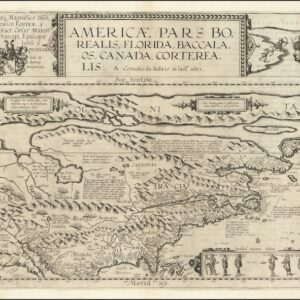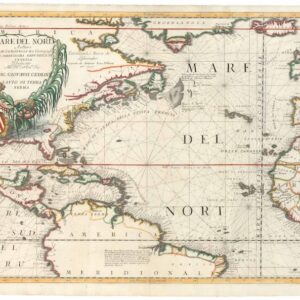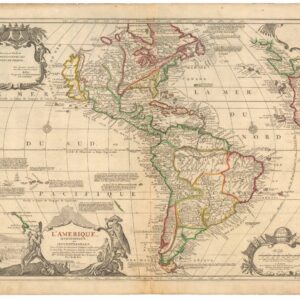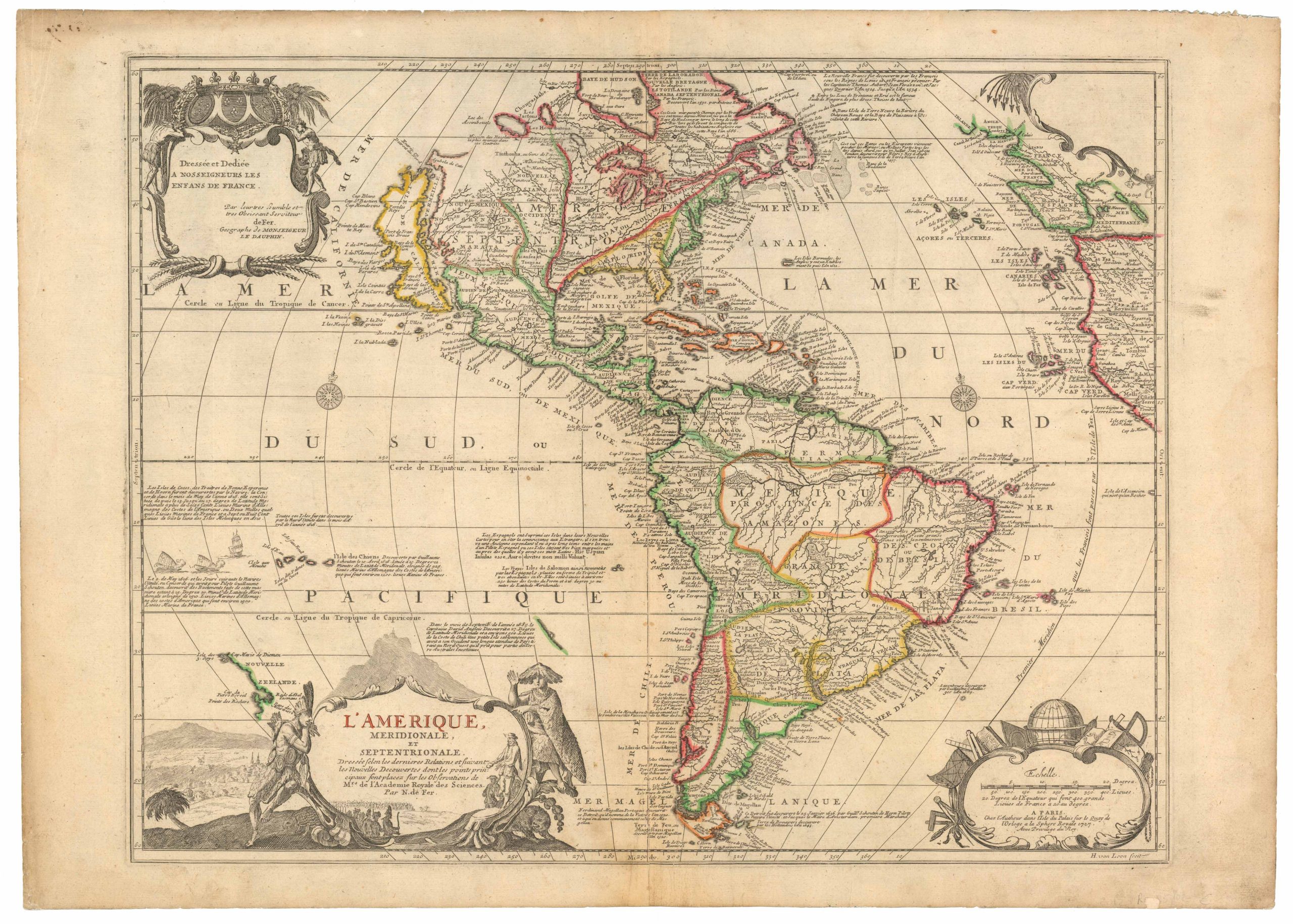From the first lithographed atlas produced in the Ottoman world.
Amrika Shumali.
Out of stock
Description
An unusual late 19th-century map of North America, produced by the pioneer of modern Ottoman cartography and published in Paris.
The Yeni Atlas or ‘New Atlas’ was compiled by soldier and geographer Hafiz Ali Esref (aka Ali Serif Pasha). Today, Pasha is considered the pioneer of Ottoman mapmaking, and his Yeni Atlas is the first modern Turkish atlas. This is merited, for Pasha did not introduce the Ottoman world to the latest European compilation methods. Still, he was also the first to bring full-color lithography to Istanbul. As a mapmaker, Pasha was hugely successful, partly due to his ability to merge traditional aesthetics with the latest techniques.
As with all the maps from the Yeni Atlas, the North America map consists of a color lithograph. The continent is entirely shown, including adjacent landmasses like Greenland, Columbia/Venezuela, Kamchatka, and England. Throughout the atlas, color is used to show political boundaries, and the North America map is no exception: pink for the United States, orange for Canada, and brown for Mexico. The distinctive labeling is in a sharply contrasting black and written mainly in Ottoman Turkish (i.e., Turkish language in Arabic script).
In addition to political borders, the map shows major cities, rivers, lakes, and mountains, with topography indicated by hachures and shading. A decorative blue border in an oriental style surrounds the map. This border can be found on all the maps of the first edition of this atlas, allowing them to be easily distinguished from later editions.
Context is Everything
The Yeni Atlas was the first lithographed atlas produced in the Ottoman world. Ali Şeref Pasha created it during his studies in Paris. He had been sent there by the Ottoman government to learn Western map-making techniques. The atlas consists of twenty-two maps at different scales of representation, all of which are double-page color lithographs. It was published in 1868 while Pasha was still a student in Paris. Surrounding each map in the first edition was a patterned blue border. The toponymy is in both modern and Ottoman Turkish, as well as in Kurdish in some places.
The Yeni Atlas was a groundbreaking achievement in Ottoman cartography and laid the basis for Pasha to continue his seminal work. Not only did he create the first modern atlas in the Ottoman world, but he also introduced the lithographic printing technique to this part of the world. After returning to Istanbul, Pasha became head of cartography for a large Istanbul printing press (Matbaa-i Amire). From this position, he continued to produce a range of essential maps for use in the Ottoman world. Among his output was another large format atlas: ىگى جغرافىا آطلسى (Yeñi coġrafya aṭlası / The New Geographic Atlas) and a monumental 100-sheet map of Anatolia based on the work of Heinrich Kiepert. This immense undertaking remained unfinished at the time of his death in 1907.
Census
The current map, Amrika Shumali in Ottoman script, was issued in the first edition of Ali Seref Pasha’s Yeni Atlas. It was published in Paris in 1868 and is dated 1285 in the Islamic calendar. The OCLC does not list individual maps from this atlas, but Pasha maps are generally considered rare.
Cartographer(s):
Ali Şeref Paşa (d. 1907), also known as Hafız Ali Esref, was an Ottoman soldier and cartographer. Details about his early life are scarce, but we know he was sent to Paris to study mapmaking by the Ottoman government in 1862. In 1868, while residing in Paris, he published his first atlas in Ottoman Turkish. Upon returning to Istanbul around 1870, Pasha became chief cartographer at the Matbaa-i Amire Printing Press in Istanbul. He produced several critical cartographic works before passing away in 1907.
Condition Description
Very good.
References




